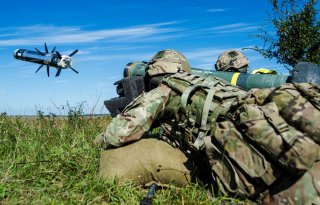Gurkhas: The World’s Most Famous Mercenaries (Known As a Savage Soldiers)
They live by the motto, “better to die than be a coward.”
They’ve been described as the world’s most savage soldier, yet the average Nepalese volunteer stands at just five-foot, three-inches tall. Looks are truly deceiving because the men who make the cut to fill the ranks of the world's most famous mercenary units are ones few would want to face in a fight.
These are the Gurkhas and they live by the motto, “better to die than be a coward.”
If that doesn’t say enough about the determination of these men, then their history might. The Gurkhas, whose name originates from the Nepalese hill town of Gorkha, were actually an enemy of the British East India Company as it expanded in the Indian subcontinent in the early nineteenth century. The two sides fought so fiercely against one another during the Gurkha War of 1814–16 that a mutual respect was earned.
According to the terms of a peace treaty between Nepal and Great Britain, the Gurkhas were allowed to join the ranks of the East Company’s army—essentially as mercenaries. During the Victorian Era, the Nepalese warriors were considered a “martial race” and were noted for their masculine qualities and general toughness.
For more than two hundred years they’ve been recruited exclusively from Nepal with the majority coming from the hill villages. In total, more than two hundred thousand Gurkhas have fought alongside the British military in every corner of the world.
They took part in wars in the Indian frontiers, in colonial wars in Africa, in both World Wars and even the 1982 Falklands War. To date, more than forty-six thousand Gurkhas have died fighting for the British Crown.
British Field Marshal Sam Manekshaw once said, “if a man says he is not afraid to die, he is either lying or a Gurkha!”
A total of twenty-six Victorian Crosses—the highest British military honor—have been awarded to Gurkhas. Until 1947 most served in the Indian Army under British officers—but following the end of British rule four Gurkha regiments were transferred to the British Army and became the Gurkha Brigade.
Their Infamous Weapon
Even those who haven’t heard of the Gurkha soldiers or their exploits in combat may know their even more infamous fighting knife—the curved eighteen-inch bladed knife known as a kukri.
The modern kukri is based on the traditional weapon carried for centuries by the warriors of Nepal, but only in modern times have members of the Brigade of Gurkhas received combat training with the knife.
A very common myth is that if the weapon is drawn in battle the blade has to “taste blood”—either of the enemy or its owner—before it could be re-sheathed. While not true, stories of the blade being used in close combat have only contributed to the misconceptions.
For much of its history, the weapon was just as often used for foraging and cooking by its owners, but the mystique around it has spawned countless “knockoffs.”
Fewer in the Ranks
As the British Army has scaled back in recent years so too have the number of Gurkhas in the ranks—numbers were cut from thirteen thousand in 1995 to just three thousand today.
Yet many continue to try for those few coveted openings.
In 2019 the Gurkha Company of the British Army agreed to a significant increase in the number of recruits that could be selected and instead of the initial 320—which had the biggest intake in thirty-three years—more than 400 joined the ranks of the famous unit. In total, 580 of more than 10,000 applicants were invited to return for the final assessment.
The selection process is far from an easy one. Tests include a three-mile uphill race while carrying in excess of sand and rocks strapped to the applicants back; doing seventy-five bench jumps in one minute and seventy sit-ups in two minutes.
Until quite recently, those who made the cut and were willing to die for “Queen and Country” weren’t actually allowed to live in the UK following their retirement from the service. That was because Nepal isn’t a member of the Commonwealth, so even as those men served in the British Army they were not technically British subjects. Some UK officials even went so far as to claim that allowing all thirty-six hundred living former Gurkhas into the UK could even create massive pressure for immigration and social services.
However, in 2009 it was announced that Gurkha veterans who retired before 1997 and served at least four years would be allowed to settle in the UK. Yet, another controversy that involved pensions hasn't been resolved and even now-former Gurkha soldiers receive only a fraction of what British soldiers are paid after retirement.
Many Gurkhas veterans who returned to Nepal were also left homeless after the early 2016 earthquake that struck their homeland and hit the hill villages quite hard.
Today, even with the hardships many young Nepalese men from the foothills will still do everything they can to join the elite military unit.
While the British Army remains the largest “employer” of the Gurkhas today, other nations including Singapore, Malaysia and India have all employed them in their respective armies and police forces. It is easy to see how these fierce warriors from the foothills of the Himalayas have become the world's most famous mercenaries.
Peter Suciu is a Michigan-based writer who has contributed to more than four dozen magazines, newspapers and websites. He is the author of several books on military headgear including A Gallery of Military Headdress, which is available on Amazon.com.
Image: UK Army

